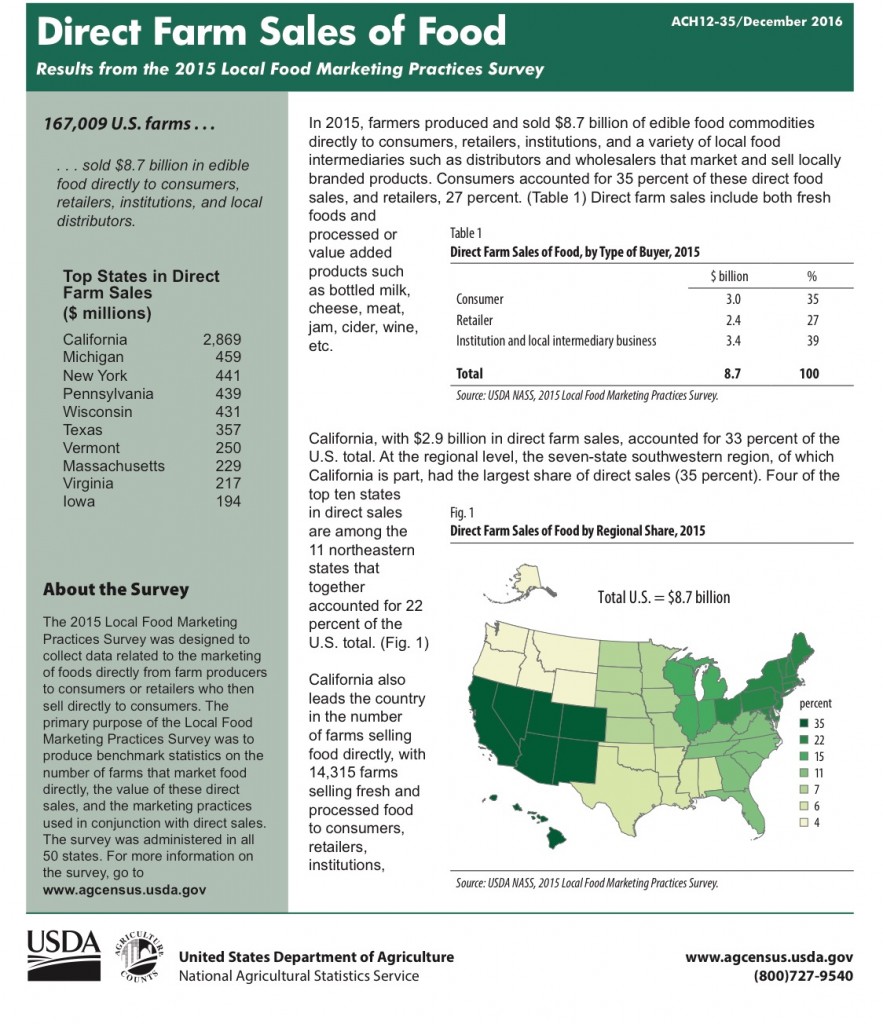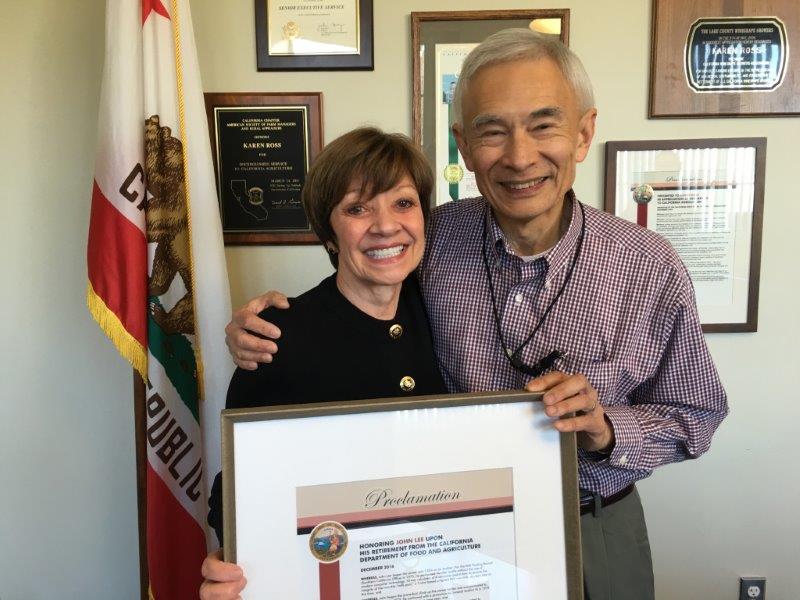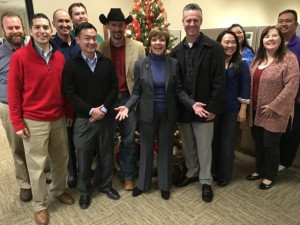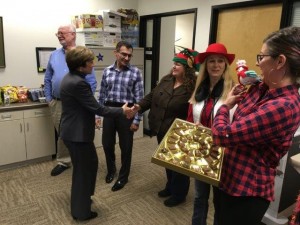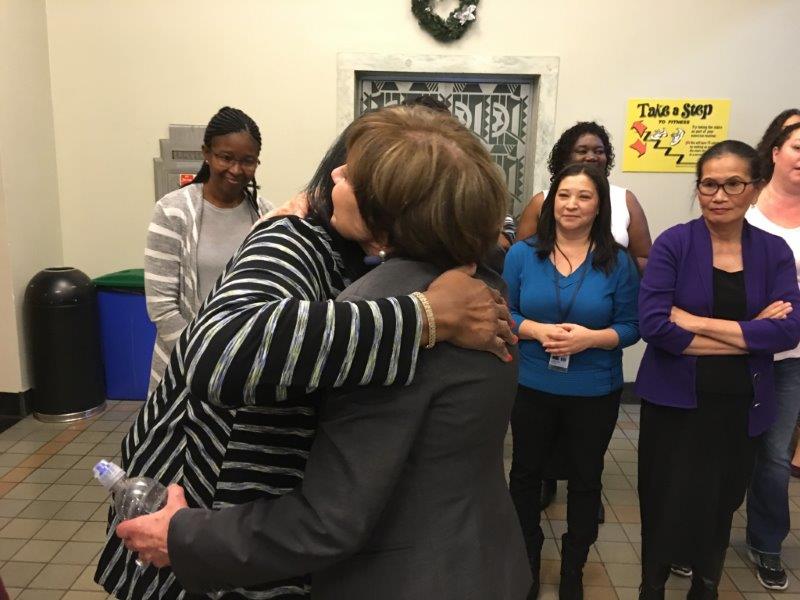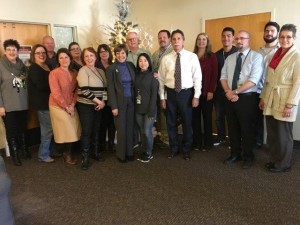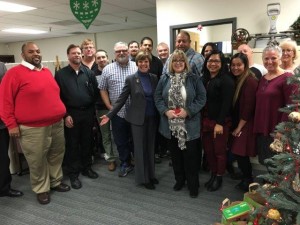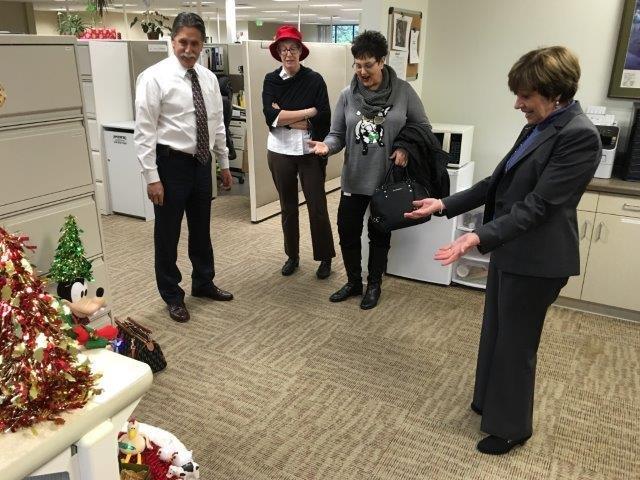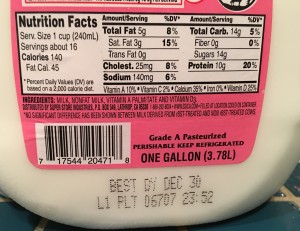-
Recent Posts
Recent Comments
- Stacy Hackney on Despite Tariffs, California Continues Trade Engagement
- Keshav Boddula on Earth Week spotlight — CDFA Food Recovery webpage offers resources for reducing food waste
- Don’t Worry, US Investors Can Still Make Offshore Wind Happen … Somewhere – Bruce Beach CA News on California Peaches and Nectarines Arrive in Vietnam! New Export Market Opens for California Products
- US Investors Can Still Make Offshore Wind Happen…In Vietnam - Oilandinvest.com on California Peaches and Nectarines Arrive in Vietnam! New Export Market Opens for California Products
- US Investors Can Still Make Offshore Wind Happen…In Vietnam - nrinvesting.com on California Peaches and Nectarines Arrive in Vietnam! New Export Market Opens for California Products
Archives
- June 2025
- May 2025
- April 2025
- March 2025
- February 2025
- January 2025
- December 2024
- November 2024
- October 2024
- September 2024
- August 2024
- July 2024
- June 2024
- May 2024
- April 2024
- March 2024
- February 2024
- January 2024
- December 2023
- November 2023
- October 2023
- September 2023
- August 2023
- July 2023
- June 2023
- May 2023
- April 2023
- March 2023
- February 2023
- January 2023
- December 2022
- November 2022
- October 2022
- September 2022
- August 2022
- July 2022
- June 2022
- May 2022
- April 2022
- March 2022
- February 2022
- January 2022
- December 2021
- November 2021
- October 2021
- September 2021
- August 2021
- July 2021
- June 2021
- May 2021
- April 2021
- March 2021
- February 2021
- January 2021
- December 2020
- November 2020
- October 2020
- September 2020
- August 2020
- July 2020
- June 2020
- May 2020
- April 2020
- March 2020
- February 2020
- January 2020
- December 2019
- November 2019
- October 2019
- September 2019
- August 2019
- July 2019
- June 2019
- May 2019
- April 2019
- March 2019
- February 2019
- January 2019
- December 2018
- November 2018
- October 2018
- September 2018
- August 2018
- July 2018
- June 2018
- May 2018
- April 2018
- March 2018
- February 2018
- January 2018
- December 2017
- November 2017
- October 2017
- September 2017
- August 2017
- July 2017
- June 2017
- May 2017
- April 2017
- March 2017
- February 2017
- January 2017
- December 2016
- November 2016
- October 2016
- September 2016
- August 2016
- July 2016
- June 2016
- May 2016
- April 2016
- March 2016
- February 2016
- January 2016
- December 2015
- November 2015
- October 2015
- September 2015
- August 2015
- July 2015
- June 2015
- May 2015
- April 2015
- March 2015
- February 2015
- January 2015
- December 2014
- November 2014
- October 2014
- September 2014
- August 2014
- July 2014
- June 2014
- May 2014
- April 2014
- March 2014
- February 2014
- January 2014
- December 2013
- November 2013
- October 2013
- September 2013
- August 2013
- July 2013
- June 2013
- May 2013
- April 2013
- March 2013
- February 2013
- January 2013
- December 2012
- November 2012
- October 2012
- September 2012
- August 2012
- July 2012
- June 2012
- May 2012
- April 2012
- March 2012
- February 2012
- January 2012
- December 2011
- November 2011
- October 2011
- September 2011
- August 2011
- July 2011
- June 2011
Categories
- AG Vision
- Agricultural Education
- Agricultural Marketing
- Alternative Fuels
- Animal health
- Animal Welfare
- Asian Citrus Psyllid
- Biodiversity
- Border stations
- BSE
- Cannabis
- Cannella Panel
- Climate Change
- Climate Smart Agriculture
- Community-based Food System
- Conservation
- Dairy
- Drought
- Environment
- Fairs
- Farm Bill
- Farm Labor
- Farmers' Markets
- Fertilizer
- Food Access
- Food Safety
- Food Waste
- Glassy-winged Sharpshooter
- Growing California
- Healthy soils
- HLB
- Hydrogen
- Integrated Pest Management (IPM)
- Invasive Species
- Light Brown Apple Moth
- Livestock ID
- Measurement Standards
- Nutrition
- Organic agriculture
- Pierce's Disease
- Pollinators
- Specialty Crops
- State Board of Food and Agriculture
- Succession Planning
- Trade
- Uncategorized
Pages
RSS

Secretary Ross to appear at 2017 Rose Parade festivities to promote California Grown flowers
As part of the upcoming Rose Parade festivities, CDFA Secretary Karen Ross will once again join the Buy California Marketing Agreement (BCMA) and the California Cut Flower Commission (CCFC) on December 31 to recognize Cal Poly campuses at San Luis Obispo and Pomona as well as FTD Inc. for their commitment to California’s flower farmers. Secretary Ross will also bestow a certification of “California Grown” on Rose Parade floats.
“I’m excited to once again be honoring our Cal Poly students for their hard work and commitment to building a California Grown Certified float for this year’s Tournament of Roses Parade,” said Secretary Ross. “And it’s great to have FTD join in this important effort this year by decorating the VIP entries, including the parade’s Grand Marshal vehicle, with California Grown flowers.”
The California Grown Certification recognizes parade floats and VIP vehicles built with a minimum of 85 percent of cut flowers and greens from the Golden State.
The float to be certified from Cal Poly is called ‘Soaring Stories.’
“We are proud to be certified California Grown again this year,” said Cal Poly San Luis Obispo President Jeff Armstrong. “Our universities are dedicated to educating the next generation of farmers and ranchers in California, so it’s only natural that we are committed to supporting the hard-working flower farmers in California today, many of whom are alumni.”
The California flower industry has a $12.2 billion annual impact on the state’s economy. California’s flower farmers represent over 4,500 jobs and contribute $1.7 million to California’s economy every day.
Link to Blog Post from California Cut Flower Commission
Posted in Agricultural Marketing
Tagged BCMA, Buy California, Cal Poly, California Grown, Cut Flower Commission, FTD, Rose Parade
Leave a comment
Santa’s reindeer cleared for entry into California by State Veterinarian
California State Veterinarian Dr. Annette Jones has granted a 24-hour permit clearing all brand inspection and health requirements for nine reindeer scheduled to visit California on the evening of December 24 and in the early morning hours of December 25.
The permit application was filed in person by a rotund, jolly man with a red suit, a white beard, and a pocketful of candy canes to share with CDFA staff. The signature on the paperwork reads “K. Kringle.”
Brand inspections and health requirements help veterinarians prevent the spread of animal disease. The law also mandates that all animals entering California be individually identified. The nine reindeer named on the permit are: Dasher, Dancer, Prancer, Vixen, Comet, Cupid, Donder, Blitzen and Rudolph.
The permit was granted with two conditions: the nine reindeer may not co-mingle with other reindeer in the State of California, and the visiting reindeer may not be used for breeding purposes while in the state. They are, however, invited to partake of the Golden State’s famous and varied agricultural bounty if they need to refuel.
“We consider it an honor to issue this permit to Mr. Kringle and do our part to ensure another successful trip,” said CDFA Secretary Karen Ross. “We wish him safe travels and plenty of milk and cookies as he and his reindeer make deliveries to the good children of California.”
Posted in Uncategorized
3 Comments
Video – CDFA and LA County team with California Conservation Corps in Medfly program
As CDFA continues its work to eradicate a Mediterranean fruit fly (Medfly) infestation in Los Angeles County, in cooperation with the the county agricultural commissioner’s office, the agencies are teaming up with the California Conservation Corps (CCC) for assistance with a project in neighborhoods near Panorama City. About 150 CCC members joined the effort this week.
Posted in Uncategorized
Leave a comment
Secretary Ross congratulates CDFA’s John Lee on his retirement – public service career spanned five decades
Posted in Uncategorized
1 Comment
Give the gift of agricultural education with a CalAgPlate!
The CalAgPlate is a great gift for your family and friends. Nothing says “California Agriculture” better than a stylish license plate that supports agricultural educational and leadership within our great state!
In April 2013, the first CalAgPlates were issued by the DMV — establishing the California Agriculture Special Interest License Plate. The issuance of the plates was approximately a three year effort that first began in 2010. As a result of the efforts of many student volunteers and agricultural organizations this was made possible.
Annual revenue generated from the original purchase and renewal of CalAgPlates helps to support the CalAgPlate Grant Program. This grant program is anticipated to make more than $225,000 available on an annual basis to support agricultural education in California.
Help support agricultural education and CalAgPlate program by purchasing a Special Interest License Plate here.
CDFA spirit of giving on display throughout agency
Each year CDFA offices around California participate in charitable drives for a variety of causes, centered around holiday displays in common areas. This week Secretary Karen Ross paid her traditional visit to locations in the Sacramento-area to wish employees happy holidays and learn more about 2016’s season of giving.

Employees of CDFA’s Office of Administrative Services in front of the holiday tree on the first floor of the CDFA headquarters building.
Posted in Uncategorized
2 Comments
An edible solution to extend produce’s shelf life – from the New York Times
By Stephanie Strom
What if a Florida tomato could be left on the vine long enough to turn red and fully develop its flavor — and still be ripe and juicy when it arrived at a grocery store in New York days later?
That is precisely the promise of a start-up here in Southern California, Apeel Sciences, that aims to make obsolete the gas, wax and other tricks growers use to keep fruits and vegetables fresh over time.
Using leaves, stems, banana peels and other fresh plant materials left behind after fruits and vegetables are picked or processed, Apeel has developed a method for creating imperceptible, edible barriers that the company says can extend the life of produce like green beans and berries by as much as five times. Apeel can even deliver a day-of-the-week bunch of bananas, each ripening on a different day.
An Apeel product already has been used to stretch the shelf life of cassava in Africa.
“It takes 30 days to get blueberries grown in Chile to market in the United States, which means they have to be picked before they’re ripe and shipped under heavy refrigeration,” said James Rogers, the founder and chief executive of Apeel. “We can change that.”
If the product performs as advertised, it could bring sweeping changes to the produce industry and grocery aisles. It could reduce food waste and the use of pesticides and increase the varieties of fruits and vegetables available.
If the product performs as advertised, it could bring sweeping changes to the produce industry and grocery aisles. It could reduce food waste and the use of pesticides and increase the varieties of fruits and vegetables available.
But the company’s product is still largely untested at a commercial level, and it faces several potential hurdles beyond effectiveness. Consumers may be wary of a new coating on fresh food, for example, and growers may decide it adds too much cost.
“The socioeconomic factors are as important as these technologies themselves,” said Christopher B. Watkins, a professor at the College of Agriculture and Life Sciences at Cornell University.
Americans have greater access than ever to a wide variety of fruits and vegetables year-round. That abundance can come at the expense of taste, as plants are chosen for their ability to withstand time and transportation, not necessarily for their flavor. And yet an enormous amount of what’s produced still rots before it can be shipped.
Another effort to alter that trade-off is SmartFresh, a product developed with Professor Watkins’s research that keeps apples from ripening too quickly in storage.
Apeel’s products, sold under the brand names Edipeel and Invisipeel, take plant materials and extract all liquids from them to produce tiny pellets. The company then uses molecules from those pellets to control the rate of water and gases that go in and out of produce, thus slowing down the rate of decay.
The version of Apeel for avocados, for example, creates a barrier that effectively fools anthracnose, a fungus that exploits tiny cracks that develop in the fruit’s skin when it begins to shrivel. Anthracnose extends a little leg through those cracks and into the fruit itself, creating the ugly brown spots that are such a nasty surprise when an avocado is opened.
Edipeel can stave off anthracnose by up to 30 days longer than existing techniques for combating the fungus. “It basically sees a different molecule than it’s used to seeing and moves on,” Mr. Rogers said.
Invisipeel can be applied while crops are still in the field. Edipeel can be applied after a harvest; crops can be coated while on a conveyor belt or dipped in the solution.
So far, the products are derived primarily from the remains of produce that has been certified organic, like grape skins left over from wine production and stems left behind after broccoli is harvested. They can be easily washed away with water.
The Food and Drug Administration has approved Edipeel as “generally recognized as safe,” a status that means a product is safe to eat and good for sale.
Some big venture capital firms are now placing bets on Apeel. Andreessen Horowitz and DBL Partners recently led a round of $33 million investment in the company that was announced Tuesday. It has raised $40 million in total.
Apeel has just begun sales of its products and said it was starting negotiations with produce companies that together account for some $6 billion in sales, according to a presentation made to potential investors.
Vijay Pande, who leads Andreessen Horowitz’s $200 million bio fund, said Apeel’s appeal was the many different issues it could tackle, from reducing a company’s carbon footprint to increasing the diversity of fruits and vegetables available.
“There are one or two first markets to go after and demonstrate impact, but where you go from there with this company is extremely broad,” Mr. Pande said.
He said Apeel could, for instance, increase yields by reducing losses at the harvest level, which would translate into lower prices for consumers. It could reduce agriculture’s environmental impact by allowing growers to ship products with an Edipeel barrier at higher temperatures. And before harvest, an Edipeel barrier could repel pests and fungi and thus reduce the use of pesticides.
And then there is the impact on wasted food.
“The answer to feeding the growing world population isn’t just to grow more food, it’s to preserve more of what we already grow and make optimal use of the resources we already have,” said Ira Ehrenpreis, a managing partner at DBL.
Apeel came into being when Mr. Rogers was a doctoral student in materials science at the University of California, Santa Barbara. He began to wonder whether the same processes he was studying to develop coatings that could be used to produce inexpensive plastic solar cells might also be applied to extend the life of produce.
He then drafted Jenny Du, a fellow grad student who had studied the synthesis and application of inorganic nanostructured films among other things, and the two of them began working in his garage to develop Edipeel.
In 2012, the concept won $10,000 in the UCSB New Venture Competition, and then Mr. Rogers received a $100,000 award from the Bill and Melinda Gates Foundation, which was interested in how the idea might help small farmers in Africa.
The foundation has used the product on the cassava root, an important source of calories in the African diet and thus is grown widely by small farmers there. Cassava root also can be processed into starch for use in commercial food preparation.
Once plucked from the ground, however, the roots deteriorate rapidly, making it virtually impossible for small farmers to exploit the crop commercially.
“If not consumed or processed in 24 to 48 hours, you lose significant amounts,” said Rob Horsch, who leads the agricultural research and development team at the Gates Foundation. “That makes it hard to generate any income from what’s produced, and a lot of it goes to waste.”
Edipeel more than doubled the shelf life of cassava, helping the root retain starch long enough to get it to a processing plant. According to an analysis by Apeel, use of its Edipeel product will create $1 billion in the market value of cassava in Nigeria alone.
“Farmers who used the product during trials in Africa are now clamoring for it,” Mr. Rogers said.
Edipeel is also being tested by Jay Ruskey, the proprietor of Good Land Organics in Goleta, Calif.
Mr. Ruskey grows finger limes, which produce a citrus “caviar” prized by chefs and bartenders. The limes, which look rather like gherkins, are good for two weeks at the most, making broad distribution almost impossible.
“Most people do not understand how much is applied to fruits and vegetables to keep them looking good — there’s a lot of wax out there,” Mr. Ruskey said. “It’s gotten to the point that if you have iced tea with us, we no longer give you a lemon slice because of the wax on it.”
The barrier Apeel has created for Good Land almost doubles the viability of the limes at this point, and Mr. Ruskey is now testing the application process and shelf life in the market.
“So far,” he said, “it looks very promising.”
Posted in Uncategorized
Leave a comment
USDA revises guidance on date labeling to reduce waste
The U.S. Department of Agriculture’s (USDA) Food Safety and Inspection Service (FSIS) is issuing updated information on food product labeling, including new guidance aimed at reducing food waste through encouraging food manufacturers and retailers that apply product dating to use a “Best if Used By” date label. Research shows that this phrase is easily understood by consumers as an indicator of quality, rather than safety.
“In an effort to reduce food loss and waste, these changes will give consumers clear and consistent information when it comes to date labeling on the food they buy,” said Al Almanza, USDA Deputy Under Secretary for Food Safety. “This new guidance can help consumers save money and curb the amount of wholesome food going in the trash.”
Except for infant formula, product dating is not required by federal regulations. Food manufacturers frequently use a variety of phrases, such as “Sell-by” and “Use-by” on product labels to describe quality dates on a voluntary basis. The use of different phrases to describe quality dates has caused consumer confusion and has led to the disposal of food that is otherwise wholesome and safe because it is past the date printed on the package. The USDA estimates that 30 percent of food is post or wasted at the retail and consumer level.
Comments on this revised guidance may be submitted through the Federal eRulemaking Portal at www.regulations.gov or by mail to the U.S. Department of Agriculture, FSIS, Docket Clerk, Patriots Plaza III, 355 E St. S.W., 8-163A, Mailstop 3782, Washington, DC 20250-3700. All comments submitted must include docket number FSIS-2016-0044. FSIS will accept comments for 60 days.
Posted in Uncategorized
Leave a comment
Learn about the Fertilizer Research and Education Program (FREP) grant process
Note – FREP funds and facilitates research to advance the environmentally safe and agronomically sound use and handling of fertilizing materials. CDFA issued a news release today about the latest FREP grant cycle.
A FREP request for proposals (RFP) is released each year, and invites researchers and educators to propose nutrient management research and education projects. The proposals undergo a rigorous selection process by scientific and technical experts, and the approved proposals receive FREP grants. Here is how the grant process works:
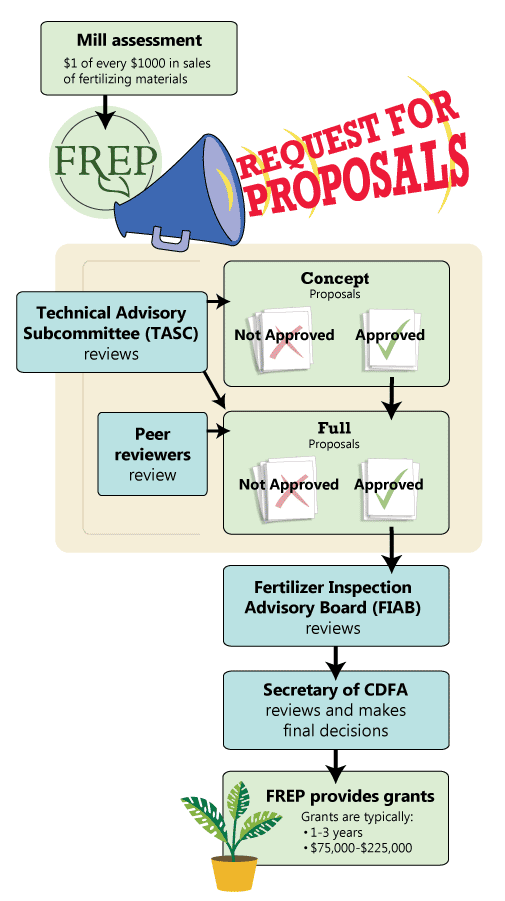 FREP grants are funded by mill assessments on the sales of fertilizing materials. FREP asks for two-page concept proposals, which are reviewed by the Fertilizer Inspection Advisory Board’s (FIAB) Technical Advisory SubCommittee (TASC), a diverse group of experts in California agriculture. TASC determines which submissions will be invited to the second phase: full proposals.
FREP grants are funded by mill assessments on the sales of fertilizing materials. FREP asks for two-page concept proposals, which are reviewed by the Fertilizer Inspection Advisory Board’s (FIAB) Technical Advisory SubCommittee (TASC), a diverse group of experts in California agriculture. TASC determines which submissions will be invited to the second phase: full proposals.
FREP sometimes also releases a Special RFP for issues that require special attention. In this case, the process begins with submission of full proposals.
A full proposal is limited to 15 pages, plus supporting documents. Full proposals are evaluated by peer reviewers, who are independent subject matter experts. They provide commentary to TASC, and TASC recommends projects for funding.
For the next step, FIAB (a group that advises the Secretary on fertilizer matters) approves or disapproves of TASC-recommended projects. The Secretary reviews the recommendations by FIAB. Upon her approval, the grants for the selected projects are initiated.
In this year’s grant cycle, the RFP was released on December 1, 2016, and concept proposals are due by 5 pm on January 31, 2017.
See more information about the process on the FREP website.
Posted in Uncategorized
Leave a comment


